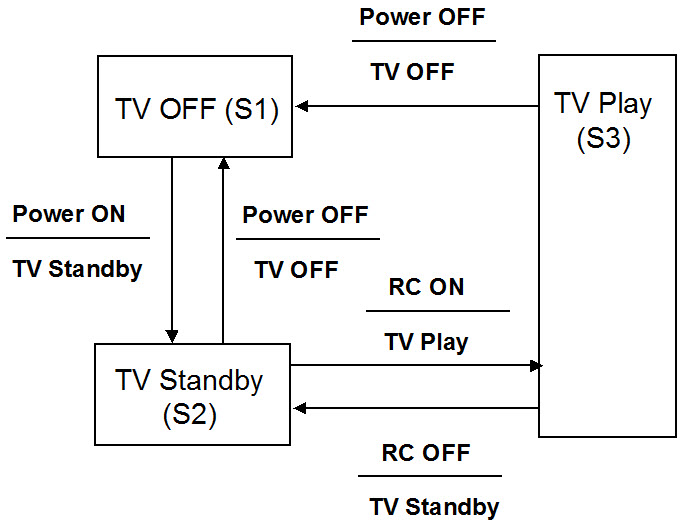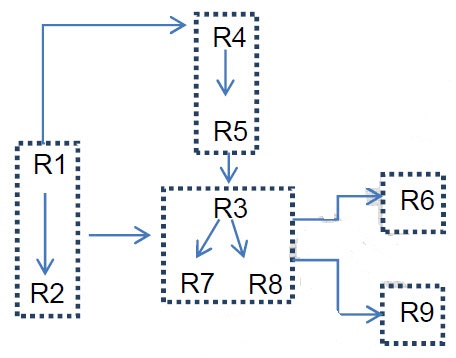ISTQB Certification Exam-Sample Papers Q. 901 to 910
(Quickly Review Your Skills before appearing for ISTQB Certification Exam)
Set of 10 Questions � Q. 901 to Q. 910
Correct Answers to Earlier Questions – Q. 891 to Q 900 are at the end of this page:
Q. 901: An employee�s bonus is to be calculated. It cannot become negative, but it can be calculated to zero. The bonus is based on the duration of the employment. An employee can be employed for less than or equal to 2 years, more than 2 years but less than 5 years,
5 to 10 years, or longer than 10 years. Depending on this period of employment, an employee will get either onus or a bonus of 10%, 25% or 35%.
How many equivalence partitions are needed to test the calculation of the onus?
A. 3.
B. 5.
C. 2.
D. 4.
<<<<<< =================== >>>>>>
Q. 902: Which of the below would be the best basis for fault attack testing?
A. Experience, defect and failure data, knowledge about software failures.
B. Risk analysis performed at the beginning of the project.
C. Use Cases derived from the business flows by domain experts.
D. Expected results from comparison with an existing system.
<<<<<< =================== >>>>>>
Q. 903: Which of the following would be the best test approach when there are poor
specifications and time pressures?
A. Use Case Testing.
B. Condition Coverage.
C. Exploratory Testing.
D. Path Testing.
<<<<<< =================== >>>>>>
Q. 904: Which one of the following techniques is structure-based?
A. Decision testing.
B. Boundary value analysis.
C. Equivalence partitioning.
D. State transition testing.
<<<<<< =================== >>>>>>
Q. 905: You have started specification-based testing of a program. It calculates the
greatest common divisor (GCD) of two integers (A and B) greater than zero.
calcGCD (A, B);
| TC | A | B |
| 1 | 1 | 1 |
| 2 | INT_MAX | INT_MAX |
| 3 | 1 | 0 |
| 4 | 0 | 1 |
| 5 | INT_MAX+1 | 1 |
| 6 | 1 | INT_MAX+1 |
The following test cases (TC) have been specified.
TC A B
1 1 1
2 INT_MAX INT_MAX
3 1 0
4 0 1
5 INT_MAX+1 1
6 1 INT_MAX+1
INT_MAX: largest Integer
Which test technique has been applied in order to determine test cases 1 through 6?
A. Boundary value analysis.
B. State transition testing.
C. Equivalence partitioning.
D. Decision table testing.
<<<<<< =================== >>>>>>
Q. 906: Consider the following state transition diagram and test case table:


Which of the following statements are TRUE?
A. The test case table exercises the shortest number of transitions.
B. The test case gives only the valid state transitions.
C. The test case gives only the invalid state transitions.
D. The test case exercises the longest number of transitions.
A. Only A is true; B, C and D are false.
B. Only B is true; A, C and D are false.
C. A and D are true; B, C are false.
D. Only C is true; A, B and.
<<<<<< =================== >>>>>>
Q. 907: Which of the following best describes the task partition between test manager and tester?
A. The test manager plans testing activities and chooses the standards to be followed, while the tester chooses the tools and controls to be used.
B. The test manager plans, organizes and controls the testing activities, while the tester specifies, automates and executes tests.
C. The test manager plans, monitors and controls the testing activities, while the tester designs tests.
D. The test manager plans and organizes the testing and specifies the test cases, while the tester prioritizes and executes the tests.
<<<<<< =================== >>>>>>
Q. 908: Which of the following can be categorized as product risks?
A. Low quality of requirements, design, code and tests.
B. Political problems and delays in especially complex areas in the product.
C. Error-prone areas, potential harm to the user, poor product characteristics.
D. Problems in defining the right requirements, potential failure areas in the software or system.
<<<<<< =================== >>>>>>
Q. 909: Which of the following are typical test exit criteria?
A. Thoroughness measures, reliability measures, test cost, schedule, state of defect correction and residual risks.
B. Thoroughness measures, reliability measures, degree of tester independence and product completeness.
C. Thoroughness measures, reliability measures, test cost, time to market and product completeness, availability of testable code.
D. Time to market, residual defects, tester qualification, degree of tester independence, thoroughness measures and test cost.
<<<<<< =================== >>>>>>
Q. 910: As a Test Manager you have the following requirements to be tested:
Requirements to test:
R1 – Process Anomalies � High Complexity
R2 – Remote Services � Medium Complexity
R3 � Synchronization � Medium Complexity
R4 � Confirmation � Medium Complexity
R5 – Process closures � Low Complexity
R6 � Issues � Low Complexity
R7 – Financial Data � Low Complexity
R8 – Diagram Data � Low Complexity
R9 – Changes on user profile � Medium Complexity
Requirements logical dependencies (A -> B means that B is dependent on A.:

How would you structure the test execution schedule according to the
requirement dependencies?
A. R4 > R5 > R1 > R2 > R3 > R7 > R8 > R6 > R9.
B. R1 > R2 > R3 > R4 > R5 > R7 > R8 > R6 > R9.
C. R1 > R2 > R4 > R5 > R3 > R7 > R8 > R6 > R9.
D. R1 > R2 > R3 > R7 > R8 > R4 > R5 > R6 > R9.
Correct Answer of All above Questions
Access the Full Database of all Questions
Correct Answers to the Earlier Questions – Q. 891 to Q 900 are as under:
| Question No. | Correct Answer |
| Q. 891 | D |
| Q. 892 | B |
| Q. 893 | C |
| Q. 894 | B |
| Q. 895 | C |
| Q. 896 | C,E |
| Q. 897 | A |
| Q. 898 | C |
| Q. 899 | B |
| Q. 900 | A,B |

An expert on R&D, Online Training and Publishing. He is M.Tech. (Honours) and is a part of the STG team since inception.
